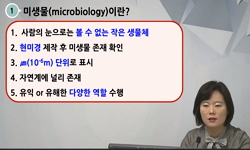올챙이의 먹이 습성을 파악하기 위하여 한국산무미양서류 중 번식시기가 유사한 두꺼비(Bufo gargarizans)와 북방산개구리(Rana dybowskii)의 유생을 대상으로 장내에서의 조류(algae) 섭식물을 조사...
http://chineseinput.net/에서 pinyin(병음)방식으로 중국어를 변환할 수 있습니다.
변환된 중국어를 복사하여 사용하시면 됩니다.
- 中文 을 입력하시려면 zhongwen을 입력하시고 space를누르시면됩니다.
- 北京 을 입력하시려면 beijing을 입력하시고 space를 누르시면 됩니다.
북방산개구리(Rana dybowskii)와 두꺼비(Bufo gargarizans) 유생(올챙이)의 먹이 습성에 관한 연구 = A Study on Food Habit of Brown Frog(Rana dybowskii) and Asian Toad(Bufo gargarizans) Larvae(Tadpole)
한글로보기부가정보
국문 초록 (Abstract)
올챙이의 먹이 습성을 파악하기 위하여 한국산무미양서류 중 번식시기가 유사한 두꺼비(Bufo gargarizans)와 북방산개구리(Rana dybowskii)의 유생을 대상으로 장내에서의 조류(algae) 섭식물을 조사하였다. 두꺼비와 북방산개구리 유생의 발생단계에 따른 먹이원의 섭식습성을 비교하기 위하여 Gosner(1960)의 분류에 따라 뒷다리가 완전히 분화되기 전인 초기유생단계(Stage 26-36), 뒷다리가 발생된 시기인 후기유생단계(Stage 37-41), 앞다리가 출현한 이후의 변태단계(Stage 42-45)의 3단계로 구분하여 먹이생물이 포함된 혼합물 1㎖를 haemacytometer를 사용하여 직접 계수하였다. 북방산개구리와 두꺼비 모두 두 유생시기(Stage 26-36, Stage 37-41)에는 치설과 장내 내용물이 존재하였으나 변태시기(Stage 42-45) 이후에는 치설과 장내 내용물이 관찰되지 않았다. 북방산개구리와 두꺼비의 유생시기(Stage 26-36, Stage 37-41)에서 섭식한 조류(algae)는 서로 차이를 보였으며, 북방산개구리의 경우 남조류가 1.86%, 규조류가 96.49%, 녹조류가 1.31%, 기타조류가 0.34%의 비율로 존재하는 것으로 나타났고, 두꺼비의 경우 남조류가 3.75%, 규조류가 49.91%, 녹조류가 45.32%, 기타조류가 1.02%의 비율로 존재하는 것으로 나타났다. 북방산개구리의 초기유생단계(26-36 stage)와 후기유생단계(37-41 stage)에는 모두 규조류가 98.23%, 92.63%로 가장 많은 비율을 차지하였다. 두꺼비의 초기유생단계(26-36 stage)에는 규조류가 47.80%, 녹조류가 49.83%의 비율로 나타났으며 후기유생단계(37-41 stage)에는 규조류가 52.05%, 녹조류가 40.75%로 나타나 북방산개구리와 두꺼비 모두 종 내 각 유생단계의 조류(algae) 섭식 비율은 유사한 것을 알 수 있었다. 그러나, 북방산개구리와 두꺼비 유생의 장내 먹이생물의 조류(algae) 구성비율은 서로 차이를 보이는 것으로 나타났다. 이와 같은 북방산개구리와 두꺼비 유생의 먹이생물 차이는 각 종의 유생의 먹이선호에 따른 선택적 섭식보다는 수온 등 환경적 요인에 따라 조류(algae) 번식에 차이를 보이는 서식지의 먹이생물자원 차이에 기인한 것으로 판단된다. 본 연구는 차후 다양한 양서류 유생의 먹이습성 연구 및 양서류 유생의 증식에 관한 기초자료로 활용될 것으로 사료된다.
다국어 초록 (Multilingual Abstract)
To determine the food habit of tadpoles, this study examined the intestinal algae feeds of larvae of Bufo gargarizans and Rana dybowskii with similar breeding season among Korean anurans. To compare the feeding habit of food source according to the oc...
To determine the food habit of tadpoles, this study examined the intestinal algae feeds of larvae of Bufo gargarizans and Rana dybowskii with similar breeding season among Korean anurans. To compare the feeding habit of food source according to the occurrence stage of larvae of Bufo gargarizans and Rana dybowskii, the stages were divided according to the classification of Gosner (1960), into early-larval stage before the hind legs are completely divided (Stage 26-36), late-larval stage with the hind legs (Stage 37-41), and metamorphic stage after the forelegs appear (Stage 42-45). Then, 1㎖ of mixture including food contents were calculated using a haemacytometer. Both Rana dybowskii and Bufo gargarizans had radula and intestinal content in the two larval stages (Stage 26-36, Stage 37-41), but none of them was found after the metamorphic stage (Stage 42-45). The algae eaten in the larval stages (Stage 26-36, Stage 37-41) of Rana dybowskii and Bufo gargarizans were different between the two. For Rana dybowskii, 1.86% was Cyanophyta, 96.49% was Bacillariophyta, 1.31% was Chlorophyta, and 0.34% was other algae. For Bufo gargarizans, 3.75% was Cyanophyta algae, 49.91% was Bacillariophyta, 45.32% was Chlorophyta, and 1.02% was other algae. Both the early-larval stage (26-36 stage) and late-larval stage (37-41 stage) of Rana dybowskii showed the highest proportion of Bacillariophyta at the rate of 98.23% and 92.63%. For Bufo gargarizans, Bacillariophyta took up 47.80% and Chlorophyta 49.83% in the late-larval stage (26-36 stage), whereas Bacillariophyta took up 52.05% and Chlorophyta 40.75% in the late-larval stage (37-41 stage), indicating that the algae feeding ratio of each larval stage in both Rana dybowskii and Bufo gargarizans was similar. However, it turned out that there was a difference in the algae composition ratio of intestinal food contents of larvae of Rana dybowskii and Bufo gargarizans. Such difference in food contents of larvae of Rana dybowskii and Bufo gargarizans may be due to the difference in food sources of habitats that show difference in algae breeding according to environmental factors such as water temperature, rather than selective feeding according to the food preference of each type of larva. This study will be used as baseline data for research on feeding habits of various amphibian larvae and on proliferation of amphibian larvae.
목차 (Table of Contents)
- 目 次
- 第 Ⅰ 章 서론 1
- 目 次
- 第 Ⅰ 章 서론 1
- 第 Ⅱ 章 재료 및 방법 3
- 1. 실험동물 3
- 2. 채집지 현황 3
- 3. 먹이생물 시료채취 3
- 4. 먹이생물의 분석 4
- 第 Ⅲ 章 결과 5
- 1. 한국산 무미양서류 종별 유생의 특징 5
- (1) 북방산개구리 5
- (2) 두꺼비 5
- 2. 먹이생물의 비율 6
- (1) 북방산개구리 6
- (2) 두꺼비 7
- 3. 먹이생물의 종류 8
- (1) 북방산개구리 8
- (2) 두꺼비 10
- 4. 분류군별 먹이생물의 비율 13
- (1) 북방산개구리 13
- 1) 남조류 13
- 2) 규조류 13
- 3) 녹조류 14
- 4) 기타조류 15
- (2) 두꺼비 15
- 1) 남조류 15
- 2) 규조류 16
- 3) 녹조류 17
- 4) 기타조류 18
- 第 Ⅳ 章 고찰 28
- 인 용 문 헌 30
- ABSTRACT 34








